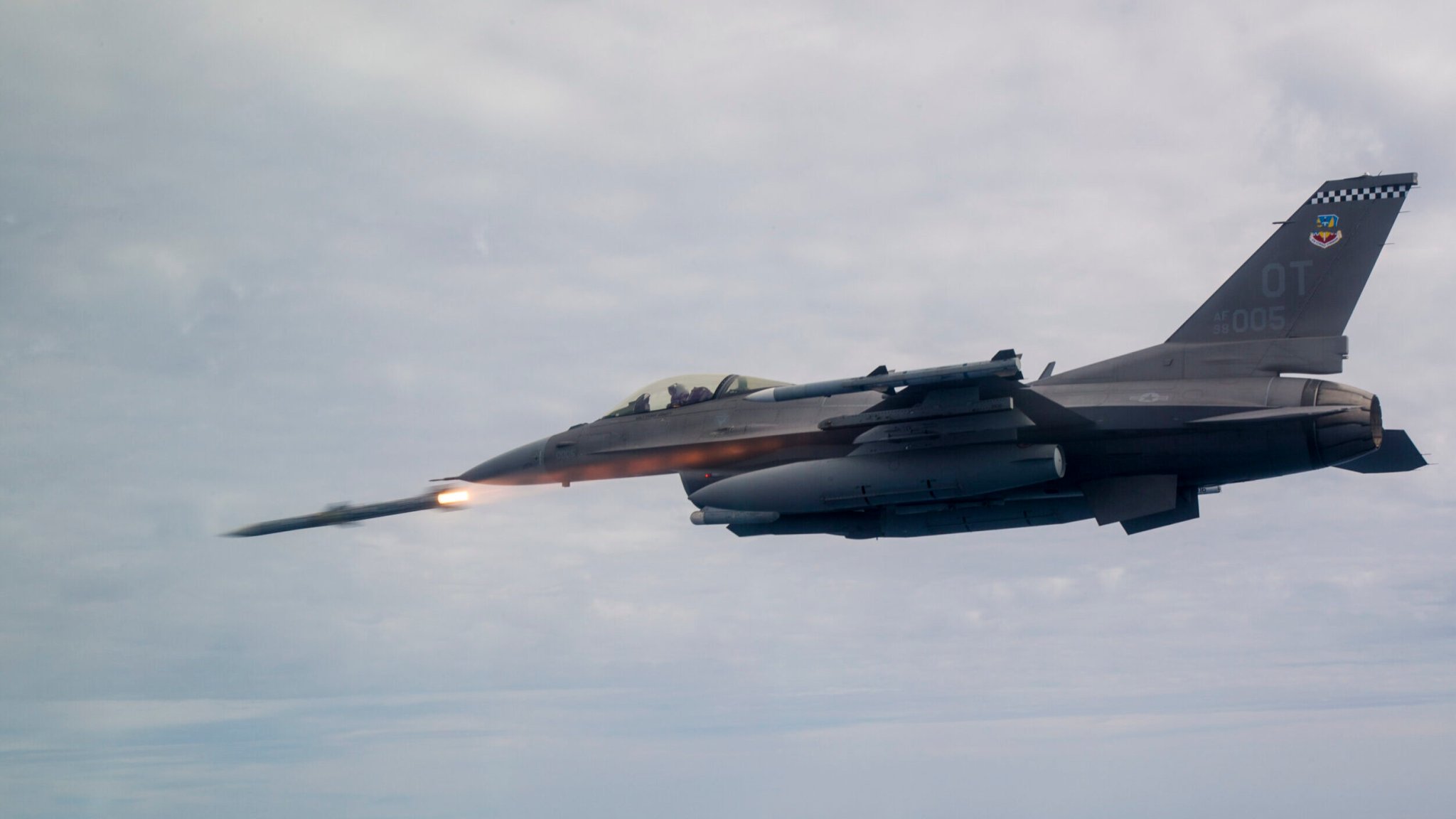

When a Chinese spy balloon entered U.S. airspace over Idaho on Jan. 31, the U.S. military waited until the balloon had crossed the entire continental United States before shooting it down over the Atlantic Ocean four days later to avoid possibly harming anyone on the ground.
The delay gave the U.S. military valuable time to study the balloon and its surveillance equipment, a senior defense official told reporters on Feb. 4.
“A benefit of waiting a few days was that we learned more about the balloon,” said the senior defense official, who spoke on condition of anonymity under rules established by the Pentagon. “But the fundamental calculation was not the intelligence value, but rather the safety to Americans on the ground.”
But since then, the U.S. military has shot down three more “high altitude objects” shortly after spotting them on radar. On Friday, an F-22 Raptor shot down an object over Alaska one day after it was detected by North American Aerospace Defense Command (NORAD). Another F-22 downed a second object over Canada on Saturday, also one day after it had been detected by NORAD. And on Sunday, an F-16 shot down a third object over Lake Huron, Michigan, that may have been detected the prior day over Montana.
Subscribe to Task & Purpose Today. Get the latest military news, entertainment, and gear in your inbox daily.
So far, defense officials have not said whether the most recent objects are balloons or some other form of unmanned airships or aircraft.
One reason why the military is detecting more of these unidentified objects recently is that NORAD has adjusted its radars to look for smaller objects traveling at slower speeds, which had previously been filtered out as clutter, Air Force Gen. Glen VanHerck, head of NORAD and U.S. Northern Command, told reporters on Sunday.
“And so, with some adjustments, we’ve been able to get a better categorization of radar tracks now,” VanHerck said at a Pentagon news briefing on Sunday. “And that’s why I think you’re seeing these overall. Plus, there’s a heightened alert to look for this information.”
The U.S. military has been “more closely scrutinizing our airspace” at certain altitudes since the Chinese spy balloon was detected in January, Assistant Secretary of Defense for Homeland Defense and Hemispheric Affairs Melissa Dalton said at Sunday’s news conference.
When asked why the U.S. military is moving quicker to shoot down high-altitude objects, Dalton said that the most recent three objects were flying at an altitude that posed a threat to commercial aviation, unlike the Chinese spy balloon. The balloon flew at more than 60,000 feet, whereas the objects downed on Friday and Saturday were flying at about 40,000 feet and the object shot down on Sunday was at roughly 20,000 feet, U.S. and Canadian defense officials have said.
The Chinese spy balloon was also 200 feet tall and had a large payload of surveillance equipment, all of which factored into U.S. military officials’ decision on when and where to bring it down, Dalton said.
“But because we have not been able to definitively assess what these recent objects are, the — the president wanted to act out of an abundance of caution to protect our security and in our interest,” Dalton said. “So, we will remain vigilant. We have made these enhancements to — to our radars. And the operations this past week have been successful in — in bringing down these potential threats.”
Another thing to keep in mind is that lawmakers on both sides of the aisle widely criticized President Joe Biden and his administration for waiting until the Chinese spy balloon had made its way across the entire continental United States before shooting it down on Feb. 4
“I don’t want a damn balloon going across the United States when we potentially could have taken it down over the Aleutian Islands,” Sen. Jon Tester (D-Mont.), chairman of the Defense Appropriations Subcommittee, said during a Feb. 9 hearing. “I’ve got a problem with a Chinese balloon flying over my state, much less the rest of the country.”
On Friday, Pentagon spokesman Air Force Brig. Gen. Patrick Ryder did not answer directly when a reporter asked him if the Defense Department had bowed to political pressure by speeding up the kill chain since the spy balloon had been downed.
“We’re going to judge each of these on its merits,” Ryder said.
The latest on Task & Purpose
- Here’s why the Marine Corps strapped a rare electronic warfare LAV to the deck of a warship
- Shot fired after intruder breaks onto Andrews Air Force base
- That time a US Navy submarine got a confirmed kill on a train during WWII
- Coast Guardsman saves man hours before graduating from rescue swimmer school
- JTAC vs TACP: A user’s guide to the troops who call in close air support
Want to write for Task & Purpose? Click here.
